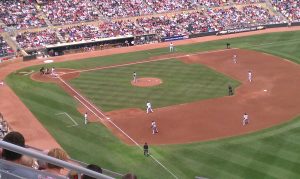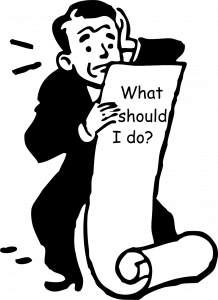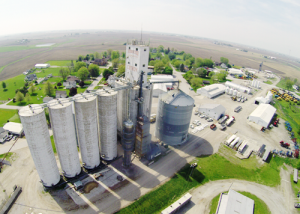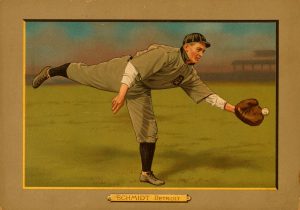Author: Luke Hasskamp
This article—the fourth in a series—addresses some of the aftermath of the Supreme Court’s decision in Federal Baseball Club v. National League, where the Court unanimously held that federal antitrust laws did not apply to professional baseball. This includes the “birth” of baseball’s antitrust exemption in the Supreme Court’s 1953 decision in Toolson v. New York Yankees.
You can find the other parts to this series below:
Baseball and the Antitrust Laws Part 1: The Origins of the Reserve Clause
Baseball and the Antitrust Laws Part 2: The Owners Strike Back (and Strike Out)
Baseball and the Antitrust Laws Part 3: Baseball Reaches the Supreme Court
Baseball and the Antitrust Laws Part 5: Touch ’em all, Curt Flood.
The evolution of the Commerce Clause
It seems safe to say that it is widely known that baseball is exempt from antitrust laws. But that exemption did not arise in the Court’s 1922 ruling in Federal Baseball. Instead, there, the Court had concluded that the Sherman Act did not apply to baseball at all—because baseball was not a form of interstate commerce. This is an important distinction.
The Sherman Act makes it unlawful to “monopolize, or attempt to monopolize, or combine or conspire with any other person or persons, to monopolize any part of the trade or commerce among the several States . . . .” The reason Congress included “among the several States” in the statute is because its authority to enact the Sherman Act flowed from Article I, Section 8, Clause 3 of the U.S. Constitution, also known as the Commerce Clause.
Specifically, the Commerce Clause gives Congress the power “to regulate commerce with foreign nations, and among the several states . . . .” If the conduct at issue did not affect commerce “among the several states,” Congress had no authority to regulate it. Thus, because the Court determined that baseball did not affect interstate commerce, Congress had no power to subject it to antitrust scrutiny.
The Federal Baseball decision has been widely criticized, both at the time and today. But when considered in context, it is somewhat understandable. For starters, the game in the 1920s was obviously much different than the multi-billion-dollar industry that we know today. There were fewer teams, lower revenues, and games were not yet watched on television—the first televised Major League Baseball game would occur on August 26, 1939, a doubleheader played at Ebbets Field between the Brooklyn Dodgers and the Cincinnati Reds.
Perhaps an even more understandable explanation for the Federal Baseball outcome was the Supreme Court’s interpretation of the Commerce Clause at the time and, specifically, its definition of interstate commerce, which was narrower than it is today.
Federal Baseball was decided during the Lochner era, which encompassed the three decades following the Supreme Court’s 1905 decision in Lochner v. New York, 198 U.S. 45 (1905). During this period, the Court struck down a number of federal and state laws relating to labor and working conditions, as the Court took a narrow view of states’ police powers and Congress’s powers under the Commerce Clause.
The Lochner era came to an end beginning in 1937, with a series of decisions from the Court upholding several federal and state statutes in this realm, and, importantly, recognizing broader grounds upon which the Commerce Clause could be used to regulate state activity. Instead of viewing the Commerce Clause as a limitation on congressional authority, it now marked one of the most effective means by which Congress could expand its regulatory reach. The narrow definition of interstate commerce was tossed out and activity was now viewed as commerce if it had a “substantial economic effect” on interstate commerce.
Baseball’s deft touch
The late 1930s to the 1950s marked an era of strategic litigation, settlements, and lobbying by baseball. With this expansion of the Commerce Clause, many predicted that it would not be long before the Supreme Court overruled Federal Baseball. Accordingly, baseball sought to avoid legal challenges that would give the Supreme Court an opportunity to do so, and it also worked to negotiate concerns in Congress that led some members to call for legislation clarifying that the Sherman Act should apply to baseball.
An interesting example of the threat faced by professional baseball, and its strategic response to it, arose from the emergence of professional baseball in Mexico soon after World War II. To attract top talent, the Mexican league offered lucrative salaries more than double what players were making in the U.S., causing several players to abandon their contracts and play south of the border. One such player was Danny Gardella, who had been offered $4,500 to play for the New York Giants but $10,000 to play in Mexico for the 1947 season. (The Mexican League was owned by Jorge Pasquel, another colorful character in the long roster of colorful characters in professional baseball, who allegedly used campaigned funds siphoned from the Mexican presidential election to pay for the substantial salaries.)
Perhaps as expected, Major League Baseball was not pleased with the defections, and Commissioner Happy Chandler banned the defecting players for five years, a remarkable penalty considering such strict penalties had only been imposed for violations that impugned the integrity of the game itself, such as gambling or cheating on games. When Gardella returned to the U.S. after the 1947 season—the year in Mexico had not been a success, especially for the Mexican league—he was unable to find a team willing to take him. Thus, he sued in federal court in New York.
The district court granted Major League Baseball’s motion to dismiss. The court recognized that Federal Baseball appeared to rest on a shaky foundation, but it also recognized that it was not its place to overturn the decision—the authority rested with the Supreme Court. Gardella appealed to the Second Circuit Court of Appeals, where it was heard by Chief Judge Learned Hand, Judge Harrie Chase, and Judge Jerome Frank.
 The Antitrust Attorney Blog
The Antitrust Attorney Blog












